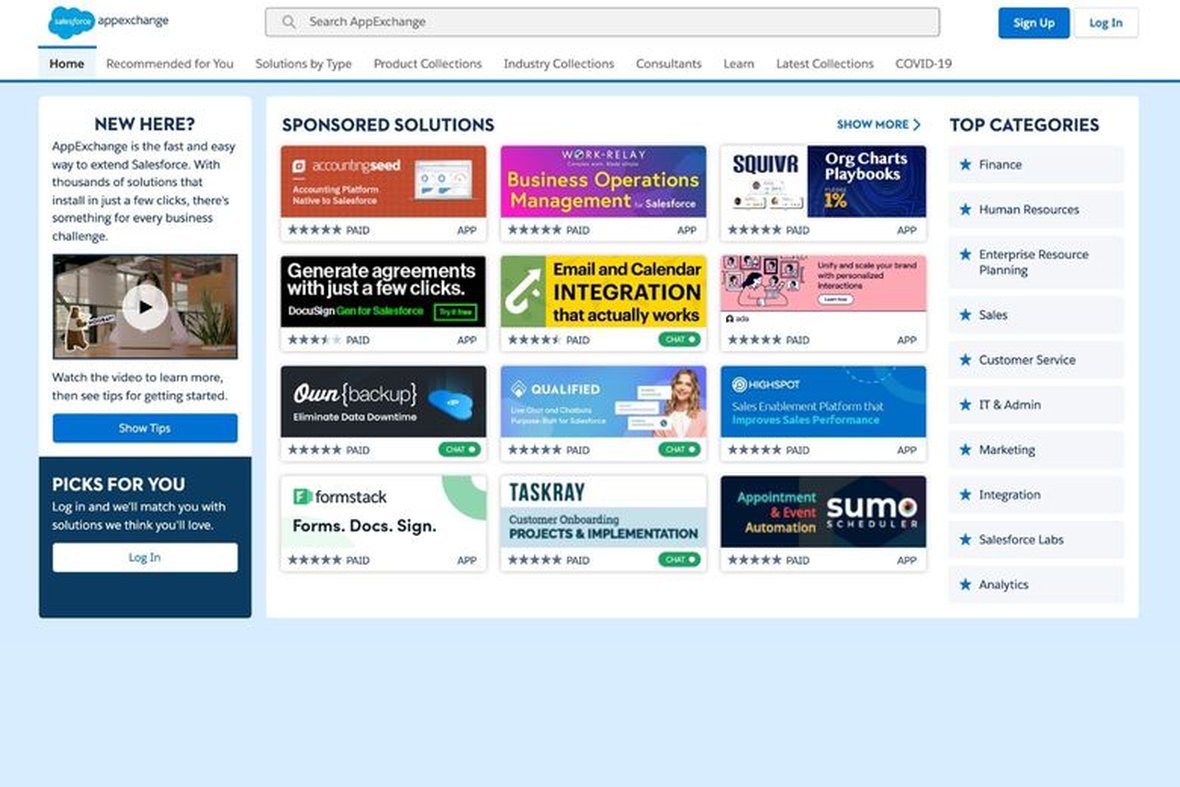
Integrating Salesforce with Django
Salesforce is one of the biggest names in the technology world - but many third-sector organisations are not using it to its full potential.
It describes itself as a CRM - a customer, or constituent, relationship manager - but what does this really mean for charities and their numerous stakeholders?
And, crucially, how can they get the best out of Salesforce by integrating with the powerful and dynamic Django web framework?
We’re going to answer both those questions for you, and look at how best to combine the two to make your charity more efficient.
Why charities use Salesforce

When it comes to software, Salesforce is a behemoth. While it has competitors in the CRM space, very few of them can match what it offers - and its size brings positive and negative factors for charities.
Across your stakeholder network, Salesforce can come in useful:
- For service-users, it can be used to keep track of their records, store information about meetings and all communications, and send out automated calendar reminders
- For donors, it can be used to store email and contact information, integrate with your donation platform to highlight your biggest supporters, and send out marketing communications
- For volunteers, it can be used to hold information, send out messages to request help for events - which can be created and tracked on the platform - and to record activity
- For staff, it can be used for real-time data entry and remove the need to use separate spreadsheets and because it operates in the cloud, data can be accessed from anywhere at any time
- For trustees, dashboards and reports can be generated to offer the latest information with less manual input.
More than 30,000 not-for-profits use Salesforce and there are numerous online guides which provide detailed, granular advice on why the platform is so popular and the features which make it so attractive.
However, if you are planning on introducing it into your charity then the options can feel rather intimidating.
Salesforce comes with some out-of-the-box features, but shows off its powerful potential through customisation. Just like other big tech providers, it has developed its own ecosystem through app development, called the Appexchange.
You’ll therefore likely need support - internally or externally - to set up the platform to ensure it works for you and to create your own tailored system. You’ll also need specialist help with integrations.

And while you might qualify for 10 free subscriptions and future discounts via Salesforce’s Power of Us programme, don’t ignore the fact that a member of your team is going to have to manage the platform. The more you use, the more time that person is going to need.
A number of reviews, detailing pros and cons of Salesforce for not-for-profits, can be found on the TrustRadius website and is well worth a read before heading into implementation.
Why integrate Salesforce with Django?
As we’ve said, there are multiple in-depth articles about Salesforce, but we want to focus on its integration with the Django web framework.
Firstly, let’s take a look at why you would want the two to talk to each other.
As we’ve outlined in our why Django is better than WordPress article, the Django framework is known for being powerful, scalable and versatile. Integration with other platforms is made easier because of this.

Digital systems should make everyone’s lives easier, but if you use multiple platforms then it can feel a little overwhelming if you’re switching from one to another on a regular basis. Far better to log into fewer and still work with the information you need.
A good example is ensuring your donation platform - which should already be hooked up to your website - speaks to Salesforce. Data can then be passed into the latter for use within communications and report-building.
This type of automation is one of the main benefits of systems integration. Of course, you can copy information from one system and manually add it into Salesforce, but this is inefficient and doesn’t make the best use of technology.
There are varying degrees of automation and as the entire workforce becomes more accustomed to digital systems and processes, so efficiencies will increase. Sharing data between two platforms is one thing, but automating follow-up actions is where time can really be saved.

Typically, when we’re looking at a Salesforce integration project, charities will want something specific - but there’s always more we can do and that tends to be very appealing.
On the simplest level, data can be passed from the website into Salesforce - such as information captured from contact forms, donors and their donations, enquiries from users or volunteers.
Many organisations will leave it there in regards to integration; data is being fed automatically into Salesforce. Job done.
But true integration is achieved when data is moved back and forth between systems, and then used for personalised purposes. A site containing a log-in function can recognise users through data held in Salesforce, and can display elements of personalisation such as nearby events or previous volunteer actions.
A simple thank-you email message, which can be automated, following a donation makes a big difference.
Get personal and proactive

The real magic happens when you come up with proactive, creative ideas on how to use the data you have collected. One example we have worked on is being able to send donors details of where their money has been spent, after a set period of time.
The resulting communication can read something like ‘Thanks so much for your donation a year ago. In that time, your money has been used for x purpose’. That’s powerful and there’s every chance of a repeat donation by keeping followers informed of how they’re helping.
This becomes even more compelling with an advanced donation platform which allows donors to select where their money has spent. That way, the follow-up communication resonates even greater. You are telling someone that the project they chose to support has reached a particular milestone and that they, personally, helped achieve it.
Another example of how we have helped a charity get the most from integration is through proactively contacting people to help. The charity in question assists communities with certain skills, and through a Salesforce / website integration, we’re able to inform individuals that their skills in a particular location are being sought after.
Your charity may also be using your website for service delivery. A Django and Salesforce integration would provide a two-way passing of personal information and could allow beneficiaries access to their future appointments via an individual log-in, or other important elements of their relationship with you.
While Salesforce integration can be achieved with any system, individual areas of a website built in the Django framework can be isolated. It means you get much more granular control of how you want specific sections of your site to operate. This is ideal for those charities wanting to make the website hub their home, and to improve it constantly.
Salesforce chatbot integration

Chatbots have the potential to be a powerful tool for charities, especially for those dealing with highly sensitive issues. Integrate one into Django and your website can support anyone 24 hours a day.
Chatbots can collect data from service users and donors as well as provide advice and answers to set questions, so integrating with Salesforce can, again, remove some manual work.
Automating such tasks allows your team to focus on new ideas and innovations, and it also removes the risk of human error in data entry. We’re all capable of typing a wrong letter or number.
One other point on integrating systems: most recommend using a third-party email client for marketing and communications rather than relying on Salesforce’s in-built functionality, particularly if you have a large database. This does mean extra cost and complexity, but mass email within Salesforce is limited.
How to integrate Salesforce with Django

When it comes to the practical steps of integration, here’s the thing: there is no one ‘how’; there are many different ways of achieving your goal. So being clear on why you’re doing it will help you - or your agency - determine the optimum ‘how’.
While some platforms can be integrated with Salesforce using specialist apps from the Appexchange, one of the most likely routes for Django integration is via an API.
Unless you have a staff member with the very specific skills required for this, you’re likely going to need the help of a specialist development house. Working with APIs requires experience and knowledge and is not something that can be easily picked up from advice articles.
APIs consist of all the messages passed to and from two systems. You need to ensure that these requests and responses are handled correctly - and that’s no mean feat. You only need to take a quick look at the Salesforce REST API developer guide to see the basic requirements.
The use of APIs is growing considerably as the demand for systems integration grows.
Summary
If your charity uses Salesforce, then you have a huge opportunity at your fingertips. However, many charities aren’t using the platform to its full potential, and are missing out on opportunities because of a lack of well-considered, well-delivered integration.
The technical aspects are one thing but being able to then use the resulting two-way data stream to its fullest potential is where powerful strategies are born - personalising proactive communications and digital experiences, and building up rich data sets.
Smart Salesforce integration can ultimately result in stronger personal relationships. Pretty amazing, right?









